SOUTH CHINA INFORMATION


This report will be my last as APCDA representative of South China. The recent times in China have been the most difficult to navigate due to COVID-19 policies. I lived off and on in Shenzhen, P.R. China, from 1999 until 2010, starting a cross-cultural consulting and career education company in 2007. I worked full-time for Shenzhen Nanshan District Education Bureau from 2010 until 2020 and then online for two years until June 2022. My enthusiasm for the region remains strong and hopeful, but South China is at a crossroads. The challenges I see for jobs, careers, and employment include
(a) dichotomies of environmental and development ambitions,
(b) labor and workforce inequalities, and
(c) governance.
“As the world’s largest greenhouse gas emitter, the success or failure of China’s ETS will help determine the future of climate change.”
(a) Dichotomies of environmental and development ambitions include China’s goal to decarbonize to net zero by 2060, coupled with China’s goal to become a self-sufficient producer of computer semiconductors.
I see this as a contradiction precisely because the net zero policy depends on deploying solar and wind energy resources with some research into alternative fuel technology. Since most of China’s energy demand is still controlled by coal, the increased energy use and development by semiconductors make the energy transition harder when adding the goals of a self-sustaining industry.
In prior reports over the past four years, I briefly mentioned China’s Ministry of Ecology and Environment (MEE), which introduced mandatory data reporting of the Emissions Trading System (ETS). These reports cover all polluting industry sectors in China, including two recently added sectors, aluminum and cement, which tend to be toxic industries. This report shows the largest ETS in the world! Read the attached reports from Energy Innovation and China’s Innovative Green Development (iGDP) to see the leakage report* (*Leakage = change in production x change in CO2 emissions intensity) as China balances the environment and the semiconductor industry development.
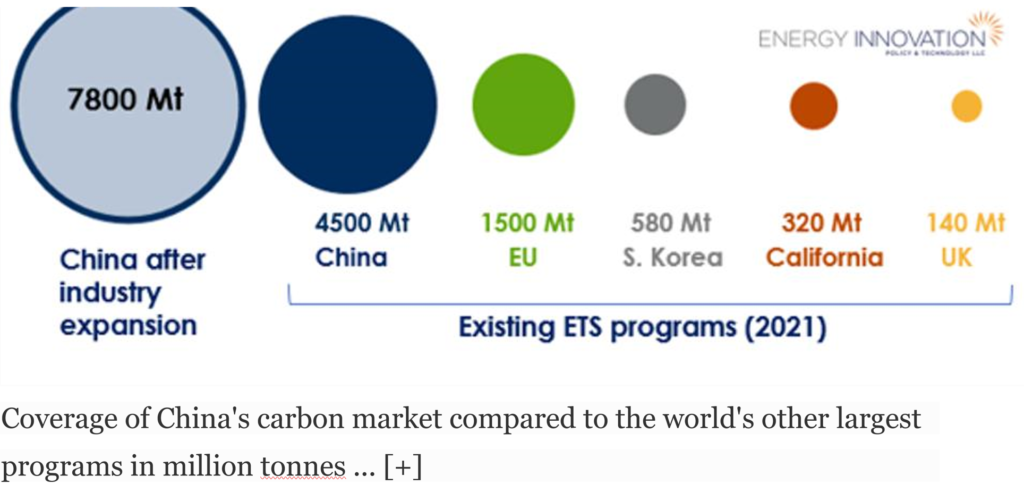
The ETS and related carbon emission industries estimate a 23 trillion dollar growth opportunity with global investments for carbon neutrality at 755 billion.
As career specialists in China continue to track new industry growth, the solutions to this dichotomy will yield many STEAM-related jobs to monitor and manage the reporting and leakages while meeting the Paris Accord 2021 environmental goals.
Living in South China over the past ten years, I assumed the semiconductor industry was well-advanced. However, only after the trade sanctions under the former US President (2017 – 2020) did I realize the foundation of computing sectors remained well-established and innovative in the USA. The semiconductor sector amounts to a huge boon for China and for workers in the high-tech development industry. The rest of the world needs to make sure that China is successful.
(b) Labor and Workforce Inequalities in South China
The one thing I noticed in Shenzhen, especially from my years in the early 2000s, was a massive gap in labor-related jobs and inequalities. These workforce issues will come to the forefront as the country reaches its worker replacement capacity due to the low birth rates. Many countries worldwide, like China, are taking stock and working to manage this worker/laborer trend. However, much of China’s migrant workforce, which in the past could make up as much as 34 percent of South China, is no longer willing to return to the main coastal cities without guarantees of pay, treatment, and incentives. COVID-19 exacerbated the situation as many laborers endured the hardest of those times in factory lockdowns and loss of work.
(c) Lastly, I attest my admiration for the number of people that must be managed in China and those doing the governance.
Seeing the rapid and amazing growth of Shenzhen firsthand, I hope the voices for differences of opinion strengthen and emerge in and among the Chinese people. Twenty-first-century career goals include self-efficacy, curiosity, flexibility, and adaptation. For those seeking to discover what they want in terms of work, I know that Chinese people want to be able to continue to choose what field they or their children go into. Whether in the growing trade schools or going into four-year colleges, parents and children are united with teachers – that the right to determine a specific and personal future should be strengthened and secured as part of the national educational curriculum. There is a growing need for career education and development in South China.
Sources:
Hold High the Great Banner of Socialism with Chinese Characteristics and Strive in Unity to Build a Modern Socialist Country in All Respects–Report to the 20th National Congress of the Communist Party of China.” October 16, 2022, By President Xi Jinping
5. COVID Remains at Zero Tolerance.
My Professional Take Aways
Throughout twenty years of working and living in South China, Guangdong Province, the National Congress presented a vivid opportunity for understanding policy development and the government’s ability to implement change. October 2022 provided a forward-looking but controlled approach to the region’s future. From my perspective as an educational specialist in careers, I spell out the concepts that raise attention for career educators. As a Chinese public school reform official, I understand the problems of China’s innovation and feel that if they emphasize Systems Thinking, the road to self-sufficiency will become easier. Here are my individual opinions on career education.
At the beginning of 2021, the Ministry of Education of the People’s Republic of China predicted that the new graduates this year would be over 10 million. However, the pandemic and global trade changes decreased economic growth. These factors drove the industrial upgrade all over the country. Unemployment was becoming quite a big problem, and it would last for a long time. So helping new graduate students get job placement is one of the most critical tasks for the Ministry of Education, colleges, and universities. Then the government started a program to help graduates prepare for job placement: The Job Placement Navigation Program.
The program, funded by the Ministry of Finance and organized by the Ministry of Education, set goals to train junior and senior college students in applying for jobs and mastering basic working skills. The training includes online training and offline training. The colleges are requested to organize the offline trainings. The online training platform is only free and open to junior and senior students. Students’ ID is the access to the platform.
The training covers ten themes: career autogenous, career exploration, target selection, resume building, and interview guides. Approximately 50,497 students received offline training and activities, and 352,000 received online training.
Since the pandemic, car owners drive due to long delays on the usually highly efficient public transportation system. The growth of vehicle ownership brings opportunity for the economy and environmental and transport problems, which are unsuitable for a sustainable private transportation system.
Systems modelers can build significant support for public infrastructure and other services based on accurate forecasts of private vehicle ownership in various provinces. The models show the variance of economic development stages, the carrying capacity of resources, and different degrees of transport planning in each province.
China’s vehicle ownership, modeled using systems dynamic software from 2016 to 2050. The modeling considers the impact on climate goals for 2050 and the reduction of carbon emissions. The Gompertz model predicts China’s vehicle ownership from 2018 to 2050 in each province, and the researchers found that over the next 30 years, vehicle ownership in each region will multiply.
However, the change in the ranking of vehicle ownership among provinces varies. Considering the population, modelers summed up the growth rate of GDP per labor, the growth rate of population, and the growth rate of employment rate to get the growth rate of GDP and then the GDP per capita of each province.
Some provinces with high or middle-class ranking will now decline in the following years, especially Beijing, Tianjin, Shanghai, and Xinjiang. In contrast, the scale of some middle and low-income provinces will increase, such as Chongqing, Hubei, Anhui, Sichuan, Heilongjiang, Jiangxi, Hunan, and Guangxi.
An increase in uses in the economic development stage and government policy related to the growth rate of GDP per labor, employment rate, and GDP per capita can affect vehicle ownership in the future. The systems modelers included the reasons that affect the trend in each province, finding the suitable vehicle growth pattern for each region.
In 2021, China’s total official population at 1.4 billion was more than the combined populations of South America, Europe, the United States, Canada, Australia, and New Zealand. However, due to the “one-child policy” implemented throughout the country since the 1960s (two children were often allowed for very rural families), the current fertility rate in the Chinese population is on par with much of the developed world at 1.3 children per family. Due to the one-child policy, male children are 51.24% to 48.76% of females. It is important not to lose sight that beginning in 2030 and up until 2100, the Chinese population will ease to 732 billion. During this time, China’s imbalance of males to females in the population will decrease females by 250 million. There will be lower overall consumption and a higher burden on elderly care with fewer workers and slowing economic growth.
The looming problem in China remains the increase in the elderly population
Currently, China’s retired and elderly population comprises one-fifth of the total Chinese population. The Chinese National Bureau of Statistics defines the 60+ (including age 60) as “an aging person.” The latest demographic statistics from 2021 detailed the number of aging persons in the population:
The rising elder population creates an estimated loss of 750 million workers in the prevailing labor market. However, while this long-term aging trend needs immediate solutions, China’s current population remains enormous, with almost 20% of the world’s total population with 71% of the Chinese people between the ages of 15 and 65 years old.
Addressing Aging Chinese Population
Since 2015 when the Chinese Academy of Social Sciences recommended the retirement age of 65 for both women and men, adding 15 and 5 years, respectively, discussions about the meaning of “Lifelong Learning” increased. The government in Beijing met the news of workforce challenges in three ways:
Beijing leaders changed and extended the retirement age* with an estimated 40+ million new retirees over the next five years.
While Beijing policymakers extended retirement dates, many Chinese men and women retire yet continue to work in the private sector after leaving significant employment. Many start or invest in new companies. The government pledged to strengthen private annuity programs from three trillion to more than four trillion yuan to strengthen private investment in pension products in 2021, typically for those white-collar workers in cities.
Beijing aims to create more than fifty million new urban jobs between 2021-and 2025, significantly lower than the 65.6 million made in the past. China’s State Council, the country’s cabinet, has created eleven million new urban jobs in 2022 while keeping the official unemployment rate below 5.5 percent.
Addressing Aging Chinese Population
Since 2015 when the Chinese Academy of Social Sciences recommended the retirement age of 65 for both women and men, adding 15 and 5 years, respectively, discussions about the meaning of “Lifelong Learning” increased. The government in Beijing met the news of workforce challenges in three ways:
How does China transform from “the factory to the world” where cheap manufacturing was king into a technological 5G dominated, AI manufactured, blockchain organized, digital currency leader by leapfrogging over the significant world technical systems?
The individual still needs to add self-determination and structure and take every opportunity to explore and learn. But currently, the forces of human resources and development are looking beyond to alleviate the impact of Artificial Intelligence (AI) automation and how to approach the elderly retirement and elderly lifelong Learning in such environment’s resources for education and training and lifelong Learning or retraining.
These initiatives, called “Lifelong Learning” by the government, include new forms of work after retirement and policy studies that measure China’s workforce skill taxonomy. China needs to anticipate the extent of labor market polarization between manufacturing and knowledge-based work; or the differences between rapidly automating spatial/distribution skills and social-cognitive skills.
The more skilled and productive individuals are, the more valuable they are to the industry and commerce sectors of the national economy (Van Der Linde, 2007, pp. 45). China’s leaders have never stopped finding and formulating optimal or desirable ways of solving lifelong learning problems or seizing lifelong learning improvement opportunities.
However, this decline problem in employed persons is entirely in the rural areas. The employed population will decrease by as much as 50%. More importantly, in 2020, 23.6 percent of the workforce were employed in the agricultural sector, 28.7 percent in the industrial sector, and 47.7 percent in the service sectors.
In urban areas, because of the current age profile and ongoing rural to urban migration, the total employed labor force will continue to increase in size – from 398 million now to 467 million in 2027 and 485 million by 2037. Urban workers are around four times more productive than rural so in terms of total output, the increase in them more than offsets the decline of the number of rural workers. But again, the urban labor force growth slows dramatically after 2027, when the growth rates of the Chinese economy might be more suppressed.
One other major labor problem remains a college-educated workforce. In recent years, all-out government efforts to increase education accommodate all students who wish to enter higher education and relevant STEM vocational colleges. Despite the rigor to attain lower birth rates, only 17.8% of all Chinese have a four-year college education (2022). While changing rapidly in favor of education, this trend remains a massive challenge to the country.
A new and exciting career research study implemented in 2021 used the USA O*Net style technologies on China’s national occupational statistics of occupations and skills taxonomy. The latest data revealed China’s specific workforce skill gaps. Outlining the country’s skill categories showed inherent problems in the country’s regionalized economies and the vast income inequalities between rural and urban centers.
The report finds new ways to transition from dependent on sensory-physical skills and occupations to more socio-cognitive professions, an essential pathway for China’s future jobs. For example, according to the skill taxonomy study, China’s third-largest city, Guangzhou, reports higher socio-cognitive skills. Like the other top ten cities in the country, these skills mean higher-paying jobs such as Administrators, Directors, and Entrepreneurs. In contrast, other city centers of South China, like Putian, are famous for shoe-making manufacturing industries that depend on lower-paying sensory-physical skills. China’s planned economy shows that the stark contrast of skill taxonomy across occupations in declining demand and lack of occupational diversity makes it much harder to reskill in the many industrial cities in China.
In 2020 college graduates also hit the highest number of students entering graduate school, with quite a lot of pandemic time to study. Many secured positions in schools and worked online, taking graduate school classes. This education technology trend led to a boom in China’s high-skilled, focused, higher education market.
Graduating students in China hit a record high of 9.9 million in June of 2021. The job market horizon for these students created a variety of responses that resulted in a rise in the number (42.5%)choosing to take jobs in China’s large, secure State-Owned Enterprises or SOEs.
The pandemic also created more significant interest in hunkering down for more study. As a result, Chinese students enrolled and graduated from higher education programs with a record high of 3.77 million students securing master’s degrees, according to state media.
While the SOEs, once conceived as traditional workplaces, comprise companies with high-level skilled workforces, one dynamic corporation includes China State Grid (Electrical power). It is one of the largest companies in the world and ties directly to President Xi Jing Ping’s national goal of climate restoration and energy efficiency plans. See the detailed article:
There have been several major economic surprises in China this past year, particularly in real estate markets. Much is changing and adapting to new demands, environments, market-making, and regulations in such a large country. It seems daunting to understand all the benchmarks to measure the overall growth and development. Analysis by the US-based nonpartisan Atlantic Council gives an in-depth and interactive review of China’s great strides since entering the World Trade Organization and perspectives on the market economy trends in the country. Read for comprehensive details:
A consortium of APCDA members from all over China (North, South, East, and West) met on 12/29/2021 with host Brian Schwartz for a wide-ranging discussion and planning meeting about formally establishing a branch of APCDA in mainland China.
The group formed a development committee of three members tasked with several fact-findings before the next gathering. Group members decided that the purpose and tone of the China branch must align with the language and culture of the People’s Republic of China. The goal is to announce the organization at the APCDA May Conference in Singapore.
Therefore, all meetings will use Mandarin Chinese and incorporate advanced communication for bilingual note-taking and simultaneous translation. Chinese nationals will take the lead in developing an integrated entity for the career professionals emerging in the unique circumstances of China’s public schools, universities and colleges, vocational schools, adult education, and lifelong learning pursuits.
*The auspicious Tiger is considered the king of all animals in Chinese mythology, paleontology, and culture. Tiger symbolizes power, courage, confidence, leadership, and strength. It’s also known to be an animal that expels all evil.
Each Chinese New Year animal is also associated with one of the five elements (water, fire, wood, earth, and metal). Water indicates healing, ambition, and prosperity.
Activites:
Report on South China Perspective on the national “Double Deduction Policy”
On July 24th, 2021, the General Offices of the CPC Central Committee and The State Council have issued Opinions on Further Reducing the Burden of Homework and Off-campus Training for Students in Compulsory Education and issued a circular, requiring all localities and departments to implement them in light of their actual conditions earnestly.China’s refocusing the nation’s families and children away from grueling test-taking training centers. This move came after the government school reforms began in 2019. During the implementation of the new policy, widespread adjustments on some of the country’s biggest tutoring and testing centers created a rush into transforming huge companies, including New Oriental Education, TAL Education Group, Gaotu, Techedu, and Scholar Education Group, all listed companies on the New York Stock Exchange. These stocks plummeted due to the clause of “restructuring from for-profit to nonprofit entities.
” However, this requirement applies to many tutoring companies but will not apply to those with significant investor sectors from the worldwide economy. The new regulatory announcement also includes online companies, such as VIP Kids, which will now need to conform to a Chinese government platform oversight to continue operations due to the central government’s security concerns for what children are learning and from whom.
There is an opportunity for licensed career education providers in China to impact afterschool and other programs and services for Chinese families. However, massive tutoring centers are searching to develop new areas of services, including some career education, because of implementing these new policies. While the topic is unique, they will be on the lookout for many new and acceptable services.
The wide-ranging effect of the Double Reduction Policy is essential news from South China and all other regions of the country. The changes leave a lasting mark on the Chinese society and business service sectors catering to children.
References
Presentation Dialogues APCDA Western United States region. Topic: Connecting the Earth’s Biosphere to Career Education Using SDGs
Participated in China Regional Group of the System Dynamics Society. This post-conference regional group presented the overall outlook on careers related to computer modeling, design thinking and modeling, and regional environmental concerns of climate change and depleted biodiversity. More to come on this subject!
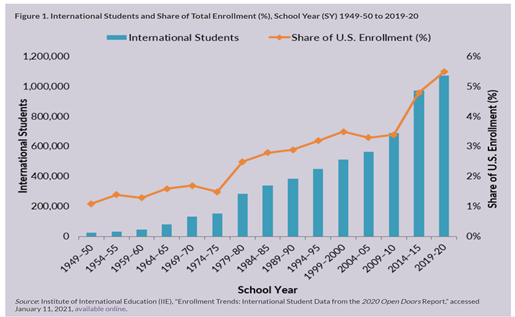
One recent career research study by Sage Publishing reveals insights into how Chinese students in the United States feel disconnected from many career counseling services provided on college campuses. Yue Li, Nancy Goodrich Mitts, and Susan C. Whiston (2021) outline how expectations about career services proved difficult for overseas Chinese students for various reasons.
The study found students view some of the main difficulties in seeking career services as cultural differences. Chinese students may be used to working out their academic issues among family and friends. Some students have an indifferent attitude about revealing personal struggles to others or perceived strangers.
In general, Chinese students seeking career counseling services want “outcome-driven activities.” They may seek services specific to their problems, which may be cultural – such as choosing a career not accepted by their family.
The student perceptions that steer them away from career counseling also relate to time and cost. Many students are at different phases of their stay abroad. Some even need the most help when they decide to return to China to find employment.
Chinese students may also perceive a lack of intimacy from college counselors. Student comments show reactions to “superficial encouragement” from career counselors about how well they can manage when, in reality, they do not feel that way. The Chinse student may question, “does my career counselor build interactions that allow for a deep relationship and trust?
Chinese students’ cultural expectations of test-taking as “the answer” do not meet their goals when taking specific career assessments. In the study, many students felt counselors might even “lead them astray.”
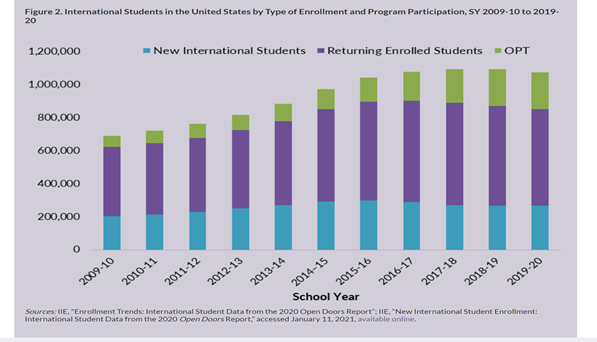
My report reflects a theme near and dear to my heart – veganism – and its growth in South China. By now, you all may know that Industrialized reproduction and slaughter of meat from animal food production is one of the most polluting factors in all the world. The rise in new plant-based foods offers excellent opportunities for future jobs through our region and all of the Asia Pacific.
Traditionally, China undergoes changes in government management all over the country as the new five-year plan (2021 -2025) begins. These changes include renewing mayors and those in government legislator positions. In most cases, government managers that have served in roles for five years will be promoted, changed, or retired. For South China, the five-year plan creates opportunities to set and meet rigorous environmental and climate change targets.

Examples include China’s Dao Foods/Hong Kong’s Queen Green, and Macau’s Meatless Monday community vegan movement to push for urban sustainable food resources and expanding job opportunities. During the 2020 COVID19 pandemic, the Chinese government called for the country to reduce meat consumption by 50% due to research coming in from SARS virus center reports with links to illegitimate “wet markets” for almost two decades. These virus outbreaks among animals, with COVID19 the worst by far, resulted in the nationwide extermination of hundreds of millions of animals annually since 2014, primarily pigs and chickens. While Chinese Buddhists have long been mainly vegetarian, the new Chinese vegans (no meat, fish, dairy) are a relatively new market and set to pass 12 billion in 2023. Many Millennials and GenZ now look forward to the tastes of plant-based foods. Due to improved processing methods and a wide range of choices, plant-based foods provide many exciting flavors for customers.
Dao Foods stands out as a significant cross-border (Canada-USA-China) company with a unique venture program for job creation. Across Pacific Rim countries, Dao Foods provides the products and trains and funds entrepreneurs in plant-based meat start-ups. Vegan boot camps in China and incubator/mentorships in Plant-Based Clean Meats (PBCM) ride the wave of vegan food.


China’s magnificent food industry is challenged to win the vegan taste competition. The cross-border impact venture aims to disrupt global meat and dairy markets to rein in China’s environmental impact. Since 2018, thousands of employees at the MGM Casino in Macau eat vegan every week on “Meatless Monday.” Interest in veganism spawned new developments in organic and laboratory-made proteins. This move to veganism translates to a boost in careers in the urban and vertical gardening permacultures, among other plant-based agricultural markets. Marketing, national forums, and publishing translate to jobs in the vegan industry ecosystem, such as UX/Ui jobs. PBCM is an industry proudly supported by young people for its economic, social, and environmental capital.

Since 2018, thousands of employees at the MGM Casino in Macau eat vegan every week on “Meatless Monday.” South China’s interest in veganism spawned new developments in organic and laboratory-designed proteins. This interest in veganism translates to a boost in careers in urban and vertical gardening: health, new farms for harvesting, permaculture, among other plant-based food markets.
Marketing, national forums, and publishing translate to jobs in these industries that young people proudly support their economic, social, and environmental capital.
Despite a robust 18.5 percent growth, the South China economy is returning slowly after COVID19. The pandemic, which required enormous mobilization and adjustments in manufacturing to produce PPE for the country, is not over. Although mainland Chinese students returned to classrooms in May 2020, families felt their students missed out on the career education plans. The government implemented compulsory education until grade 9 and new high school college testing rules. South China career professionals are finding new ways to hold virtual internships for students to gain valuable work knowledge for making career decisions.

Internships and “externships,” although down regionally by 30 percent this year, expanded eligibility so that college students were able to partake in workplace vegan programs with Dao Foods. Opportunities for UX/UI Design and marketing research emerged in the vegan food industry, which is a disruption to traditional Chinese social and cultural food preferences. Roughly 4-5 percent of the population or 50-70,000,000 people claim to be vegan in China! These numbers are expected to double by the end of 2021.


The Country/Area Council Report for Southern China includes more in-depth coverage about vocational career education advancement. In October, we reviewed high school vocational initiatives. Our report looks at these initiatives in institutions of higher education. Vocational college and all other Universities and Colleges lead to a robust digital future upskilling with hybrid courses in specialized industry and certifications integrated into all significant Chinese colleges and universities. In 2019, the Chinese Ministry of Education adopted a blend of academic credentials and vocational certificates for its colleges and universities. With record numbers of college graduates in China, more pressure for jobs well paying emerged when many industries came to rely on technology instead of employees.
Since April 2020, China’s National Centre for Educational Technology (NCET) launched new projects on ‘Upskilling and Certifying the Digital Skills of Chinese Vocational College Students’ based on global industry standards within science and technology and public and private universities and colleges.
To manage and change China’s profound cultural perceptions that vocational skills training is not as esteemed as regular college and university degrees, the government education departments prepared 1+X programs for higher education institutions. This new hybrid education of general degrees and micro-credentials or skills accreditations allows for the associate and BA degrees in addition to essential credentials that address job-delivering, specific workplace needs. These industry credentials earned during undergraduate and graduate school provide more distinction among human resource managers.
In China, government leadership acknowledges climate change as a significant threat and the restoration of damaged environments as an existential threat to long term economic prosperity and regime survival. However, there is still a mixed track record on sustainability and environmental systems and strategies. The transformation of China into green technologies, smart grid, electric transportation technologies, an ecological packaging revolution, and even green digital finance alliances led by individual companies and significant industries supports the government. Since 2015, the government-supported eco-industrial parks (EIPs), green industry demonstration bases (GIDBs), and more recently, with a global model, circular economy pilot cities (CEPCs). All initiatives create a strong locus for future jobs with graduates from China’s colleges and universities.
One of the most modern cities in the world, Shenzhen developed rapidly over the past forty years. Recently the city became the first large city (14 million) worldwide to switch to all 16,00 electric buses and 22,000 taxis. The goal is for all buses, taxis, and cars to be electric vehicles by 2035. To connect to the exciting roll-out of electric technology, see
The Country/Area Council Report for Southern China includes an update and announcements on regional career opportunities. It also covers the push for a national vocational career education week to include a broader spectrum of Chinese citizens.

By 2022, the GBA will establish a cooperative medical system among Guangdong, Hong Kong, Macao, and Dawan District Chinese medicine industry. This cooperation will lead to building many high-level Chinese medicine hospitals. By 2025, the Chinese medical platform will build several international schools of Chinese medical science. The objective is to promote technology through replicable innovations as significant scientific research, especially promoting cancer cures and other well-known brands into the international market.
To meet the talent demands of Chinese economic development, the Ministry of Education in Beijing implemented a nation-wide, virtual “Vocational Week Events.” The focus on vocational schools is designed to partner with industry to provide career related workshops.* The South China regional industries seeking to employ and train young people in the growth and development of the vital GBA industries include a wide range of innovative technologies, front-line jobs for pandemic relief, and a range of entrepreneurship advantages.
The number of Guangdong’s Vocational School students in 2018 was 867,300. The number of Guangdong’s Vocational College students in 2018 is 829,900. The COVID-19 recovery act Reported Chinese New College Graduate’s Employment in the 3rd Quarter to be at a growing rate now that the virus remains contained.
*To launch the Vocational Education Week, the Education Departments of all Chinese provinces, autonomous regions and municipalities directly under the Central Government (Education Commission), Propaganda Department of the Party Committee, Net-a-Post Office, Human Resources and Social Security Office (Bureau), Industry and Information Technology Department, Agricultural and Rural (Agriculture and Livestock) Office (Bureau, Commission), SASAC, General Trade Union, League Committee, The Human Resources and Social Security Bureau, the Industrial and Information Technology Bureau, the Agricultural and Rural Bureau, and the General Trade Union, among other relevant units will participate in the national Vocational School Expansion and Development Week-long Event.

Membership Drive:
Over the past few months our members set the goal to increase APCDA awareness in the country area. We studied the membership drive in Japan and learned from the methodology our colleagues developed. After reviewing general marketing principles and program in China, we collected and analyzed data from relevant public and private schools, universities, education and career services training.
During our research and meetings with career service providers and educators, it became apparent that webinars in both English and Chinese will be highly appreciated. We are experimenting with the idea to meet the growing needs of the regional/country area of South China.
Regional Webinar in the Works!
South China region members plan to hold an APCDA webinar on the topic of Career Education in Chinese Public Schools. We will include Macau, SAR and Hong Kong, among other members in our online forum.
NOTE: I left China on 1/18/20 and have not been able to return due to COVID19, rather I have been working remotely “sheltering in place” in the San Francisco, Bay Area. At this juncture, there is still COVID19 uncertainty, so we remain virtual for now.
Elisabeth Montgomery, Ph.D. and Claire Ouyang, Ph.D. co-authored a
During this quarter, before the pandemic spread beyond China’s borders, I had the opportunity to meet with Macau council member Dr. Claire Ouyang and exchange ideas on career research theory and practice. Face-to-face meetings help educate, validate, and motivate each other. South China members are looking forward to a time when the borders are open again between mainland China and the region.
The Evolving Pandemic:
South China is at the forefront of the pandemic containment, working closely with Hong Kong, Taiwan, and South Korea for response policy, supplies, and new responses as the virus COVID-19 progresses. For these reasons, the K-12 career symposium we hoped to hold for public schools postponed this event until fall or early 2021. We will keep you posted!
Shenzhen News:
Shenzhen, Nanshan District – Xili (University Town) community. South China University Education Group – Experimental School No. 2 Administration and teachers successfully held its first year of job shadows for grades 7-8. The week-long event took place just before the holidays (January 13 – 17), and parent, student, and employer data is currently in analysis for a final report. This program initiates grades 1-9 career activities in public schools. Parents in grades 1 -9 assisted with finding the Job Shadow placements for students in their crucial seminal career program. One hundred and sixty middle school students grade 7-8 attended job shadows for 1-5 days. 60+ employers reported highly successful enrichment programs with students.
Shenzhen, Nanshan District. Yucai Education Group Shekou representative Ms. Zhou Lili has been consulting and providing courses to Yucai students, Nanshan school parents, and teachers. Ms. Zhou designed a year-long course, including two semesters divided into three parts; first, “what is a career?“ second, “self-awareness,” and third, “how to know the work world.” The fourth part is about how to plan or design your career. She held eight lectures in different Nanshan schools with over 300 parents attended the speeches: “Plan Your Child’s Education by Visualizing the Future.“ For teachers, Lily held three training sessions with over 100 teachers on the topic: “Life Like Summer Flowers.”
NASA and Space Jobs::
Additionally, I attended an online seminar with NASA on the 20th anniversary of the International Space Station. Much of the conversation centered on the skills, attitudes, and psychology of extreme jobs with isolation factors, and emergent conditions. The two-day event included an overview of the capabilities of the future based on twenty years of the study of humans in space. Skills of the future include prediction modeling, isolation confinement/close environments psychology, physics-informed AI (complexity, completeness, and noisiness). NASA also emphasized skills in risk reduction modeling, space robotics, automated chemistry, and lunar excavation – to name a few! One of the ways NASA hopes the general public can assist with the goals of the international space station is to generate social media information to share the findings and accelerate understanding of the coming future of space odyssey.
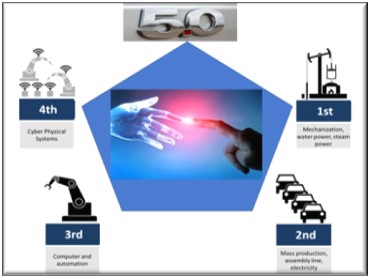
Regional News Articles Jobs/Career News Synopsis
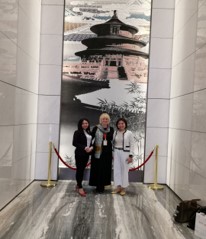
Workplace job shadow partnerships with middle school teachers and South China industries give students practical skills needed for work. Parents support these measures. – Dr. Elisabeth Montgomery, at Beijing Bank in Shenzhen.
 Teacher, parent, and student career workshops bridge the knowledge gap as schools begin implementing vital career programs – Lily Zhou
Teacher, parent, and student career workshops bridge the knowledge gap as schools begin implementing vital career programs – Lily Zhou
Job Shadow students learn coding and marketing in an entrepreneurial setting at Shekou Entrepreneurship Street at InterLangua Software.
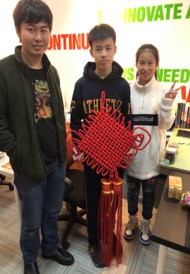
Reporting from South China for the APCDA, over the past few months, we were planning, implementing career programs, proposal writing, and coordinating school-based development for careers in Chinese public schools, primarily in Shenzhen’s Nanshan District. We also made connections with two other Shenzhen city districts – BaoAn and Futien, to compare career programs.
We submitted a funding proposal to the Nanshan District Education Bureau to host a South China Middle School Career Symposium in June 2020.
In December, we are working on programs with Chinese parents, administrators, and business industry groups to design school-based Job Data Banks for job shadows and internships aimed at middle school students grades 7-9. These activities include research components to present at the APCDA India conference in March.
 Dr. Elisabeth P. Montgomery is a renowned Educational Innovator in Shenzhen, China and one of three Designers of YuCai High School, International Department, www.ycid.org. For nearly two decades Dr. Montgomery has lived and worked in Shenzhen, China, just over the mainland border with Hong Kong. Her current position is Senior Advisor on Internationalization for the Nanshan District Education Bureau, public school Inspector, and Foreign Vice Principal at the South China University of Science and Technology (SUSTECH) Education Group in Shenzhen. She also is International advisor in China and Latin America.
Dr. Montgomery’s SPECIALIZATIONS include:
Dr. Elisabeth P. Montgomery is a renowned Educational Innovator in Shenzhen, China and one of three Designers of YuCai High School, International Department, www.ycid.org. For nearly two decades Dr. Montgomery has lived and worked in Shenzhen, China, just over the mainland border with Hong Kong. Her current position is Senior Advisor on Internationalization for the Nanshan District Education Bureau, public school Inspector, and Foreign Vice Principal at the South China University of Science and Technology (SUSTECH) Education Group in Shenzhen. She also is International advisor in China and Latin America.
Dr. Montgomery’s SPECIALIZATIONS include: APCDA 2019 Conference Presentation:
